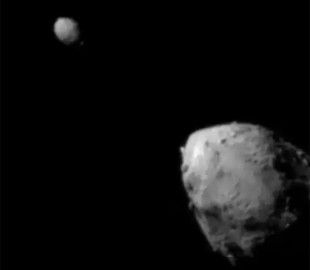In 2022, NASA successfully changed the trajectory of an asteroid with the help of the Double Asteroid Redirection Test (DART) spacecraft as part of a revolutionary experiment Now it became known about the unexpected consequences of this event – the debris of this asteroid may collide with Mars.
After colliding with the tiny asteroid Dimorphos, the DART spacecraft caused significant destruction, leaving a trail of boulders, loose rock, and dust. Pictures taken by NASA's Hubble and James Webb space telescopes show the large-scale consequences of the collision.
What are the consequences for Mars
< p>Although experts have determined that the debris will not pose a threat to Earth, there are indications that some of it may intersect the orbit of Mars. According to Marco Fenucci, a researcher at the European Space Agency's Coordinating Center for the Study of Near-Earth Objects, if these boulders enter the Martian atmosphere in about 6,000 years, they could create impact craters when they reach the surface.
This is an unintended consequence. NASA missions emphasize the complexity of space exploration and the unpredictability of celestial events. The DART mission, which was deemed successful in redirecting the asteroid, inadvertently triggered a meteor shower, highlighting the complex dynamics at work in space.
Although the collision produced unexpected results, including changing the shape of Dimorphos and releasing numerous boulders, scientists did not lose vigilance to potential risks. In particular, there are concerns about the consequences for ESA's Hera spacecraft, which is due to meet Dymorphos in 2026.
Despite these concerns, experts assure that the probability of Hera's collision with debris remains minimal. However, this incident serves as a reminder of the ongoing efforts to understand and reduce the potential danger posed by celestial bodies in our solar system.

